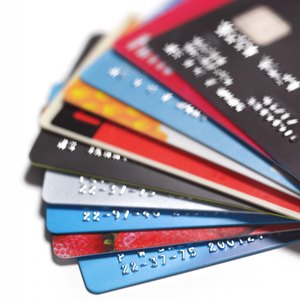
Accounting involves recording financial events taking place in a company environment. Segregated by accounting periods, a company communicates financial results through the balance sheet and income statement to employees and shareholders. Debits and credits serve as the mechanism to record financial transactions. Debit and credit rules date back to 1494, when Italian mathematician and monk, Lucia Pacioli, invented double-entry accounting.
The Accounting Equation
In accounting, debit and credit mean left and right, respectively. Abbreviated as "dr" and "cr," every transaction consists of two entries that balance each other. Debit and credit rules provide the framework for the balance sheet and income statement to work together and represent transactions accurately. Accountants make entries within the context of the accounting equation: assets = liabilities + stockholders' equity. Proper accounting requires the equation to always stay in balance.
Asset Accounts
Assets include balance sheet items such as cash, accounts receivable and notes receivable, inventory, prepaid expenses, office supplies, machinery, equipment, cars, buildings and real estate. The rule for asset accounts says they must increase with a debit entry and decrease with a credit entry. The normal balance of an asset account is debit. The normal balance of any account is the entry type, debit or credit, which increases the account when recording transactions in the journal and posting to the company's ledger. For example, cash, an asset account, has a normal debit balance. If accountants see the cash account holding a negative balance, they check first for errors and then investigate whether the account is overdrawn.
Liability Accounts
Liabilities have opposite rules from asset accounts, since they reside on the other side of the accounting equation. Balance sheet liabilities include business debts and obligations such as accounts payable, notes payable, salaries payable, accrued expenses payable, sales tax payable, bonds payable and mortgages payable. To keep the accounting equation balanced, accountants record liability account increases in the opposite manner of asset accounts. Liability accounts have a normal credit balance – they increase with a credit entry. An abnormal, or debit balance, may indicate an overpayment on a bill or an accounting error.
Shareholders' Equity
Shareholders' equity, which refers to net assets after deduction of all liabilities, makes up the last piece of the accounting equation. Shareholders' equity contains several accounts on the balance sheet that vary depending on the type and structure of the company. Some of the accounts have a normal credit balance, while others have a normal debit balance. For example, common stock and retained earnings have normal credit balances. This means an increase in these accounts increases shareholders' equity. The dividend account has a normal debit balance; when the company pays dividends, it debits this account, which reduces shareholders' equity.
Revenues and Expenses
The income statement shows revenue and expense activity. The revenue remaining after deducting all expenses, or net income, makes up the retained earnings part of shareholders' equity on the balance sheet. Revenue accounts have a normal credit balance and increase shareholders' equity through retained earnings. Expense accounts, however, have a normal debit balance and decrease shareholders' equity through retained earnings.
References
- AccountingTools: Debits and Credits
- Accounting Coach: Debits and Credits (Explanation)
- Balance Sheet - Definition & Examples (Assets = Liabilities + Equity)
- Corporate Finance Institute: Income Statement
- Financial Industry Regulatory Authority. "Margin Account Requirements." Accessed Oct. 31, 2020.
- Electronic Code of Federal Regulations. "Title 12, Ch. 2, Subchapter A, Part 220." Accessed Oct. 31, 2020.
- Federal Reserve Bank of Kansas City. "A Guide to the ATM and Debit Card Industry," Page 21. Accessed Oct. 31, 2020.
Writer Bio
Cynthia Gaffney has spent over 20 years in finance with experience in valuation, corporate financial planning, mergers & acquisitions consulting and small business ownership. She has worked as a financial writer for online finance publications since 2011, including eHow Money, The Motley Fool, and Sapling.com. She has also edited for several online finance publications, including The Balance, Opposing Views:Money, Synonym:Money, and Zacks.com. A Southern California native, Cynthia received her Bachelor of Science degree in finance and business economics from USC.
